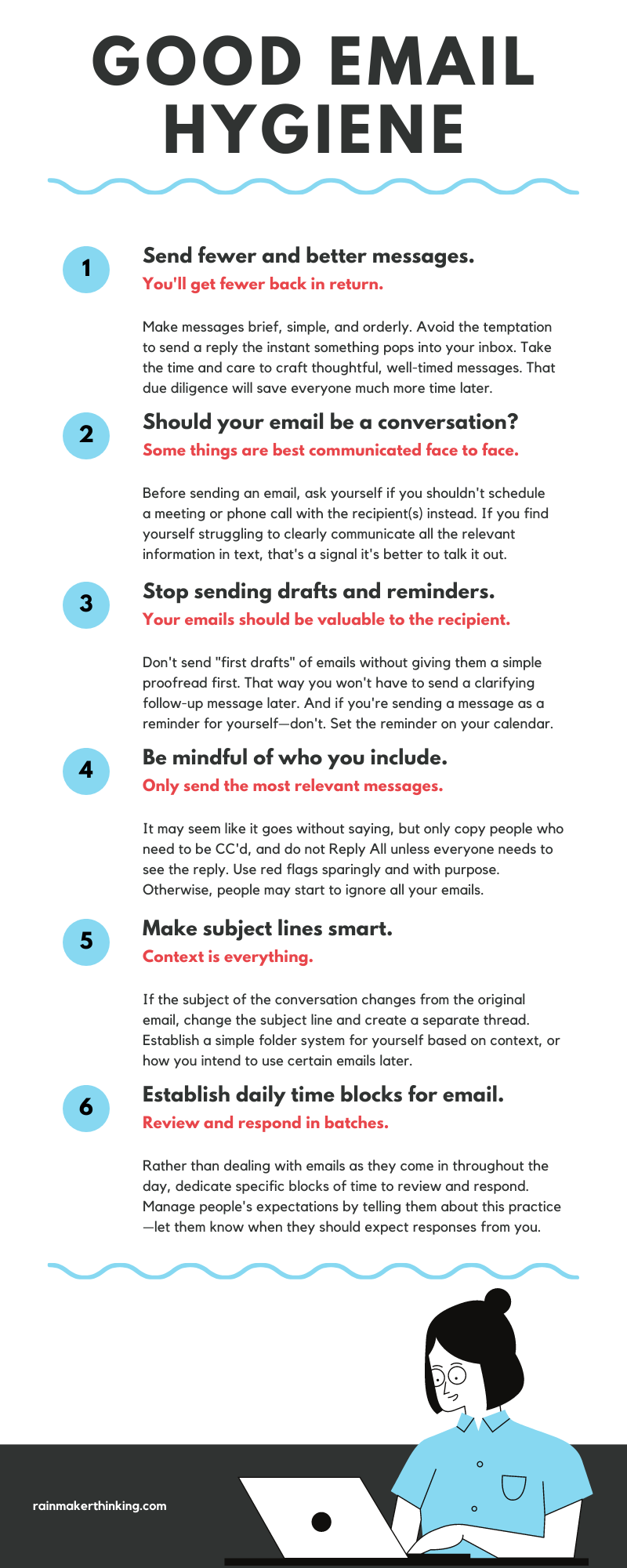Blog
Improve productivity by practicing good email hygiene
We all know it but don’t often say it—email is a huge productivity killer. Like clockwork, as soon as we are about to start working on a task or project, an email pops into our inbox. We may try to ignore it, and it may work for a little while, but the distraction of that unanswered ping will eventually pull us out of what we’re doing. We dutifully click over to our open email tab to read and respond. And we know it’s only a matter of time before it happens again.
Just think about it: how much time do you spend each day reading, responding, or trying to ignore email? And no doubt that amount of time has been exacerbated by the recent surge in remote work. Conversations that once might have happened in the office are all now happening electronically.
Many of us have embarked on worthy crusades to tame our inboxes and therefore our time. (Remember the inbox zero trend from a few years ago?) But often, these ambitious endeavors fall to the wayside over time. As more pressing priorities arise, our old email habits reemerge.
I advocate for a simple system, what I call practicing good email hygiene.
1. Send fewer and better messages
Make messages brief, simple, and orderly. Avoid the temptation to send a reply the instant something pops into your inbox. Take the time and care to craft thoughtful, well-timed messages. That due diligence will save everyone much more time later.
2. Ask yourself, “Should this email be a conversation?”
Some things are best communicated face to face. Before sending an email, ask yourself if you shouldn’t schedule a meeting or phone call with the recipient(s) instead. If you find yourself struggling to clearly communicate all the relevant information in text, that’s a signal it’s better to talk it out.
3. Stop sending drafts and reminders
Don’t send “first drafts” of emails without giving them a simple proofread first. That way you won’t have to send a volley of clarifying follow-up messages later. And if you’re sending a message as a reminder for yourself—don’t. Set the reminder on your calendar.
4. Be mindful of who you include
Your emails should be relevant to whoever is receiving them. Only copy people who need to be CC’d, and do not Reply All unless everyone needs to see the reply. Use red flags sparingly and with purpose. Otherwise, people may start to ignore all your emails (even the truly important ones).
5. Make subject lines smart
If the subject of the conversation changes from the original email, change the subject line and create a separate thread. Establish a simple folder system for yourself based on context, or how you intend to use certain emails later. That way you spend far less time sifting through old messages to find the ones you need.
6. Establish daily time blocks for email
Rather than dealing with emails as they come in throughout the day, dedicate specific blocks of time to review and respond. This may seem like heresy to some people. But email is asynchronous communication, after all. If someone really needs your attention right away, they should probably call or text. But do make sure to manage people’s expectations by telling them about this practice—let them know when they should expect email responses from you.
You may think these six steps to good email hygiene are a given—that they don’t need to be said. But try committing to them for a little while. You’ll notice the difference.
Improve how you collaborate with our online training course
This post is based on a lesson from our newest RainmakerLearning online course: Back-To-Fundamentals Collaboration: The Art of Being Indispensable at Work. Get this lesson, plus nearly three more hours of content for only $50! Enroll at RainmakerLearning.com.
